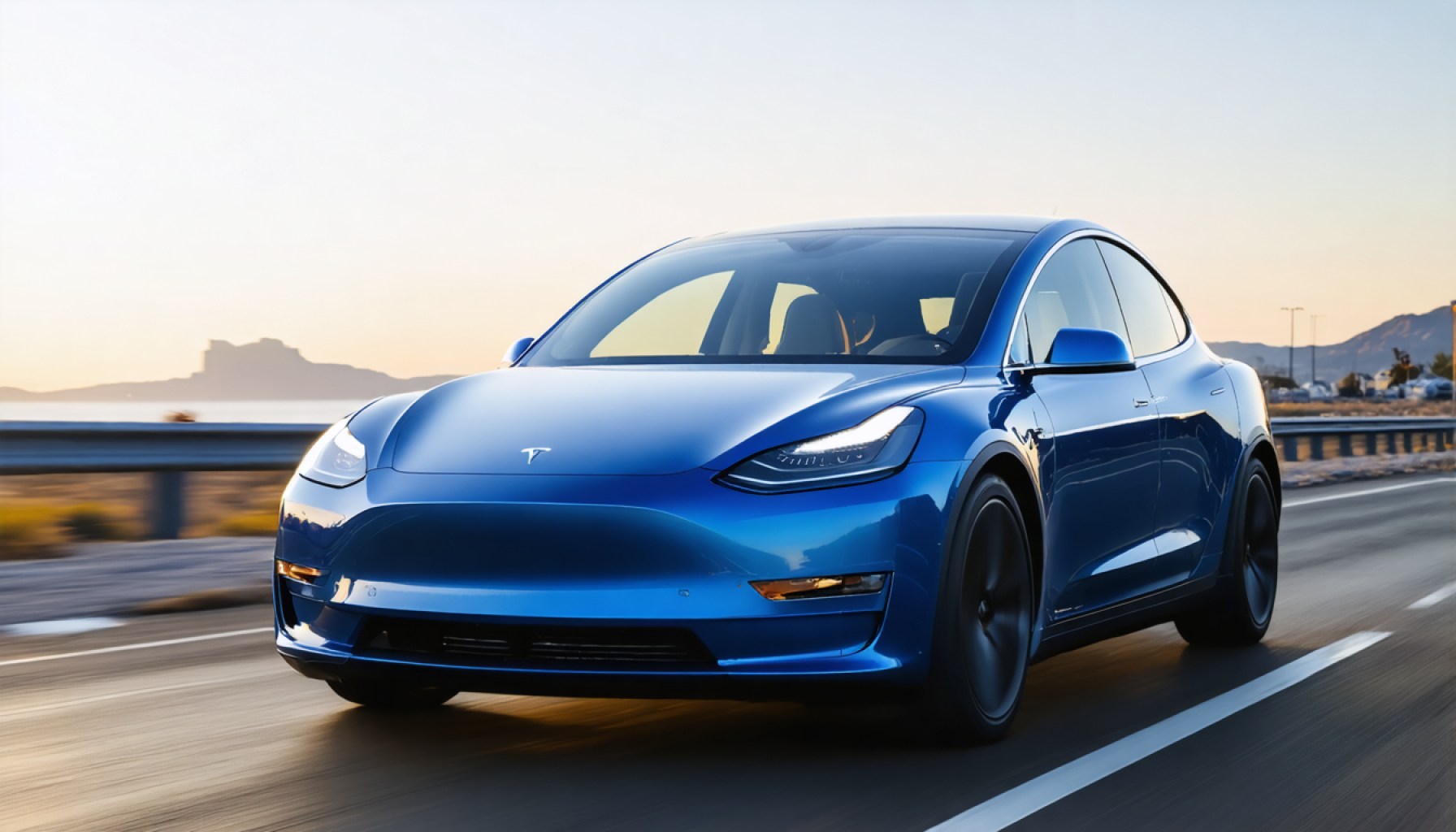- David Lau, Tesla’s vice president of software engineering, departs after over 12 years, leaving a significant leadership gap in the company’s software division.
- During his tenure, Lau oversaw the development of Tesla’s sophisticated software that integrates self-driving capabilities, cloud services, and manufacturing processes.
- As a cornerstone of Tesla’s success, the software division blends cutting-edge technology with consumer usability, creating more than just vehicles but digital marvels.
- The industry anticipates who will fill Lau’s role as Tesla continues to drive innovation in AI and digital integration within the auto industry.
- Lau’s departure underscores the ever-present nature of change in technology and innovation, prompting Tesla to rethink and reimagine its future strategies.
A quiet whisper hums through Silicon Valley as David Lau, Tesla’s long-serving vice president of software engineering, unexpectedly departs from the electric vehicle giant, leaving industry insiders speculating over the ripples his exit might cause. Lau, a stalwart at Tesla for over 12 years, has been at the helm of the software division since 2017, a period marked by rapid innovation and ceaseless expansion. His departure signals a significant shift in the company that prides itself on pushing technological boundaries.
Throughout his tenure, Lau led teams that crafted the sophisticated software underpinning Tesla’s vehicles, a pivotal component that has redefined automotive performance and consumer expectations. Under his guidance, Tesla’s software evolved into a seamless ecosystem that not only powers the company’s renowned self-driving capabilities but also orchestrates an intricate ballet of cloud services and manufacturing processes.
As Lau steps away, questions loom about who will fill the large shoes he has left behind. The software division remains a cornerstone of Tesla’s success, bridging cutting-edge technology with consumer usability to create vehicles that are not just cars but digital marvels. As the auto industry pivots towards AI and digital integration, Tesla’s next software leader will inherit an empire with a legacy of groundbreaking advancements but also face the daunting challenge of driving the next wave of innovation.
This moment serves as a poignant reminder that even visionaries like Tesla must continually adapt, evolve, and prepare for the next chapter of innovation. The future direction of Tesla’s software, a fundamental pillar supporting Elon Musk’s ambitious vision of a sustainable automotive future, might well hinge on the company’s response to this leadership void.
The essence of Lau’s departure sends a clear message: In the fast-paced world of technology and innovation, change is the only constant. For Tesla, and indeed the tech industry as a whole, the transition marks a moment to reflect, re-strategize, and reimagine what the future holds.
Tesla’s Software Revolution: What’s Next After David Lau’s Exit?
Overview
David Lau’s departure from Tesla marks a pivotal moment, sparking questions about the company’s future in digital innovation. Central to Tesla’s rise as an automotive disruptor is its software division, which Lau expertly led to new heights. His exit could have profound implications, shedding light on Tesla’s next steps in maintaining its competitive edge.
Additional Insights and Analysis
1. The Impact of David Lau’s Leadership:
– Lau spearheaded initiatives that enhanced Tesla’s Autopilot and Full Self-Driving (FSD) systems. Under his leadership, Tesla’s vehicles integrated advanced AI for more intuitive self-driving capabilities, significantly distinguishing Tesla in the EV market.
2. Potential Successors:
– Speculation surrounds who might fill Lau’s shoes, with industry analysts suggesting internal candidates with a deep grasp of Tesla’s software architecture might be best suited. Key players in Tesla’s engineering teams, known for their rigorous innovation, are potential contenders.
3. Tesla’s Software Strategy:
– Tesla’s approach marries hardware with software, creating a seamless integration that enhances user experience. The new software head will need to maintain this harmony while enabling further breakthroughs in AI and user interface design.
4. Industry Trends in Automotive Software:
– As competitors like Rivian and Lucid Motors grow, Tesla must innovate to stay ahead. Trends indicate a push towards more sophisticated ADAS (Advanced Driver-Assistance Systems) and IoT-connected car services.
5. Controversies and Challenges:
– Tesla has faced scrutiny over the safety and transparency of its self-driving claims. New leadership might need to emphasize clearer safety measures and regulatory compliance advancements.
6. Market Forecast:
– The global automotive software market is expected to grow significantly, driven by advancements in autonomous driving and digital vehicle management systems. Tesla’s role as a leader in this domain underscores the importance of strategic software innovation.
Key Questions and Answers
– How does Tesla maintain its software edge post-Lau?
– By keeping its focus on cutting-edge AI and machine learning, Tesla can continue developing unparalleled autonomous driving features. Prioritizing collaboration between its AI teams and software engineers will be essential.
– What are the primary threats to Tesla’s software dominance?
– Increasing competition from established automakers embracing digital technology and startups focused on innovation pose significant threats. Continuous software updates and consumer-centric features will be crucial to maintaining leadership.
Actionable Recommendations
– For Tesla: Consider strengthening collaborations with tech giants for AI development and invest in software research. Transparency in Autopilot capabilities can help rebuild consumer trust.
– For Industry Professionals: Keeping abreast of Tesla’s advancements can offer insights into broader industry trends. Attending automotive tech conferences can provide networking opportunities and hands-on learning experiences.
– For Consumers: Stay informed about the latest software updates from Tesla to maximize vehicle performance and enhance safety.
Conclusion
David Lau’s departure is an inflection point for Tesla’s software journey. As the company ventures into its next chapter, strategic leadership will be paramount in securing its place at the forefront of automotive innovation. For the tech industry and consumers alike, all eyes will be on Tesla’s next moves.
For more insights into AI and automotive innovations, visit Tesla’s official website.
